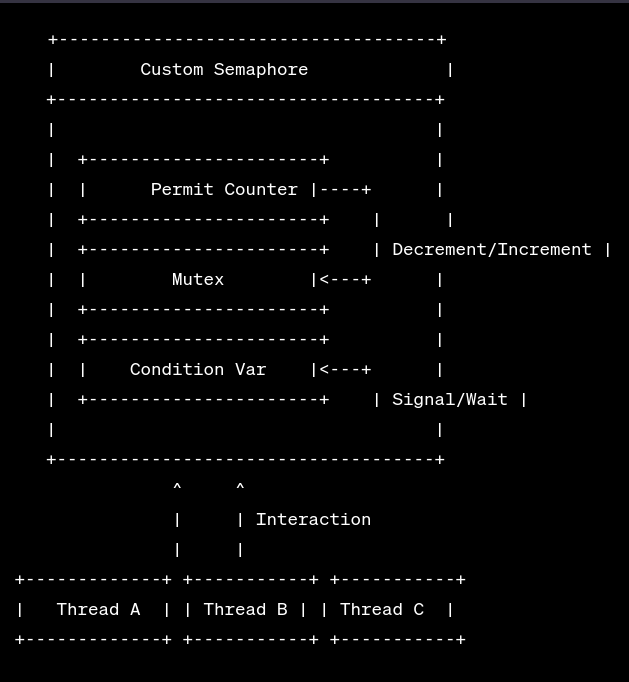
Diving Deep into Concurrency: Building My Own Semaphore in C! 💻🔥
Hey tech enthusiasts! 🚀
Concurrency and multi-threading are the realms where computer science gets intriguingly complex. Today, I’m super excited to unravel a project where I ventured into creating my very own semaphores in C! 🧩 For the uninitiated, semaphores are these cool synchronization tools that ensure multiple processes play nice when trying to access the same resource.
Unpacking the Project 📦
Let’s dissect what this project is all about. The main goal? To not just understand, but to master synchronization mechanisms (and, well, to flex a bit on this tech prowess 😉).
Here’s the blueprint:
- sema.h: Think of this as the brains behind the operation. It lays down the structure, function prototypes, and macro definitions.
- sema.c: This is where the magic happens! 🎩✨ From initializing our semaphore to defining its functions, it’s all in here.
- semaphore_hello_world.c: Want to see our semaphore in action? This application spins up multiple threads and showcases them in a synchronized dance, thanks to our custom semaphore.
Diving Deeper 🌊
Semaphore’s Anatomy: At its core, our semaphore has a permit counter, a condition variable (
cv), and a guardian angel, aka the mutex, ensuring everything runs smoothly.The Semaphore Lifecycle: From its birth with
sema_initto its operations viasema_wait&sema_post, our semaphore ensures threads either groove or wait for their turn.
Hungry for the full story? 📖 Dive into my GitHub repository here to quench that tech thirst!
Why Should You Care? 🤔
Semaphores aren’t just academic concepts. They’re the unsung heroes in operating systems, databases, and any application where multiple threads are partying hard 🎉. Building one from scratch is like understanding the secret recipe behind your favorite dish 🍲.
Bumps on the Road 🚧
This wasn’t a cakewalk:
- Priority Inversion: A sneaky problem where higher-priority tasks wait because a lower-priority task holds a resource.
- Speed Bumps: Wrestling with performance bottlenecks, especially when our semaphore was in high demand, was a challenge.
Wrapping Up 🎁
This project was my roller coaster ride through synchronization’s thrilling world. And oh boy, what a ride it was! 🎢
For those eager to dive deeper into the tech ocean, set your sails towards my GitHub.
Stay curious, keep coding, and catch you on the flip side! Until next time, techies! 🚀💡
